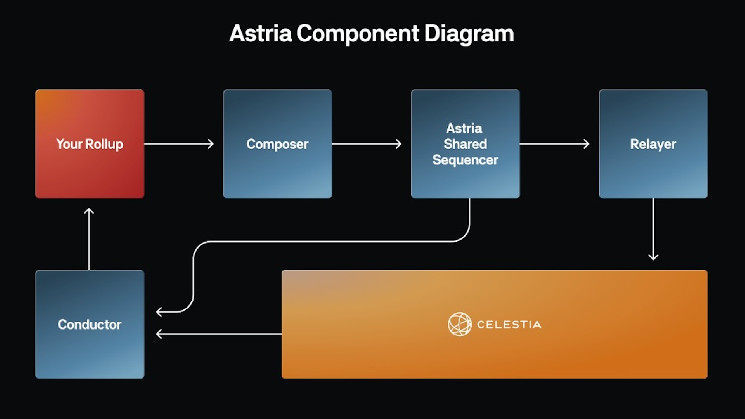Astria, a blockchain project that describes itself as the “first decentralized shared sequencing layer,” has launched the main network for its alpha release.
The project aims, among other things, to decentralize blockchain ‘sequencers’ – the part of a layer 2 network that collects transactions taking place on the secondary network to record them on a main layer 1 blockchain, such as Ethereum . For example, Metis, a layer-2 network for Ethereum, has developed its own decentralized sequencer.
But Astria’s sequencing layer could be used as a modular plug-in for other networks, as an alternative to a centralized sequencer – sometimes seen as a bottleneck, or a single point of failure, or possibly a vector of transaction censorship. Nearly all layer 2 networks in use today use a centralized sequencer, including Coinbase’s Base, which reportedly generates millions of dollars in revenue for the parent company.
“With today’s launch of the mainnet, we have taken an important step towards our vision to make decentralization the norm in crypto again,” said Astria.
The project, which raised $5.5 million from investors including 1kx, Delphi Ventures and Figment Capital in April 2023, was originally conceived as an effort to build a settlement layer for native rollup networks on the Celestia data availability network, said a press release.
“Over time, we realized that settlements were not the only piece missing from the modular ecosystem,” the release said. “Developers needed a way to provide fast confirmations to their users without having to rely on centralized sequencers like rollups in other ecosystems.”
It could work on both Ethereum-compatible EVM smart contract programming environment and Solana’s SVM environment.
Astria says its setup represents a “single, permissionless network that can be shared among many rollups, providing both unwinding (i.e. bridging) and decentralized sequencing, with fast (~2s) block times and single-slot finality.”
Astria is “unapologetically Celestia’s first project and would not exist without the support of Celestia Labs, the foundation, and the broader Celestia ecosystem,” the release said.
The Astria mainnet alpha uses Celestia’s token (TIA) and data is posted to Celestia. The first data blog was reportedly posted here.

